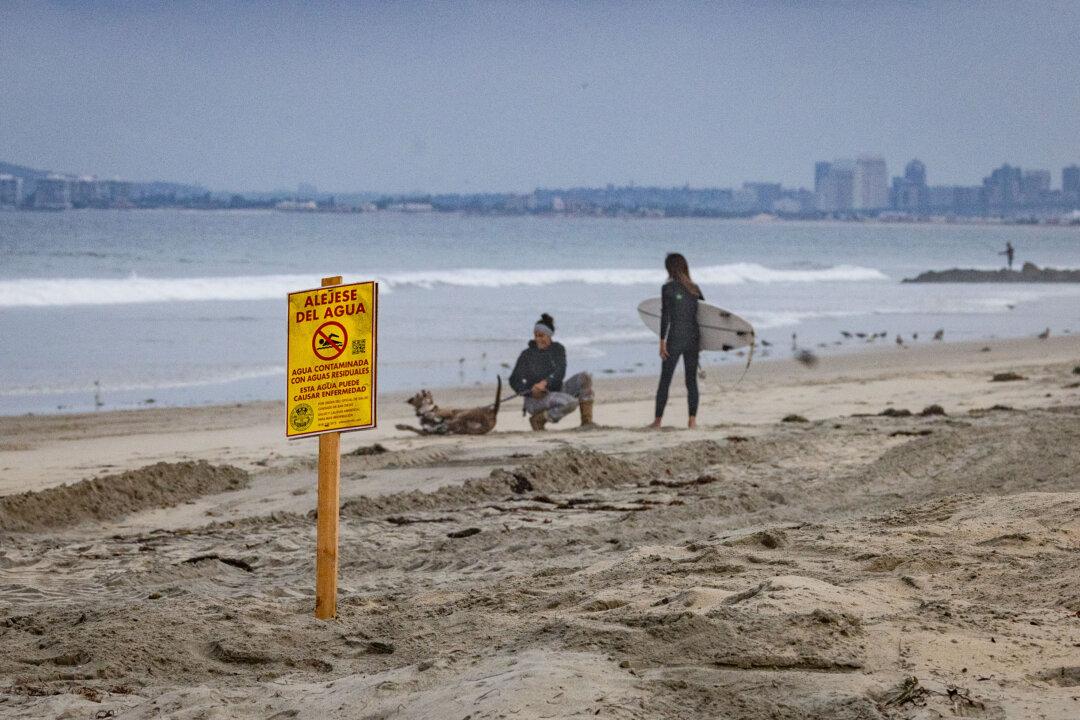When Amy Neville, of Aliso Viejo, California, lost her 14-year-old son Alex to an illicit pill that contained a fatal amount of fentanyl in 2020, the dealer was just one town over—continuing to sell—using the popular smartphone app Snapchat.
“We think Alex bought from him over the weekend before taking the pill,” Ms. Neville, who has since moved from the state, told The Epoch Times. “The last time I saw him was Monday night. When I awoke him in the morning for his orthodontist appointment ... he was gone.”
The dealer’s Snapchat handle was “Aj Smokxy,” which no longer exists.
Just a week and a half after Alex’s death, another young man died after purchasing yet another illicit drug from Aj Smokxy, who continues to operate his drug business in south Orange County, according to Neville.
Being 50 times more powerful than heroin, fentanyl is often mixed with drugs to increase potency and decrease manufacturing costs for dealers and their providers, unbeknown to the buyer in many cases.

California’s Fentanyl Crisis
In California, recently launched legislation decriminalizing some drugs have been met with surging drug addiction and fatal overdoses.In regard to fentanyl, between 2017–2022, the state saw deaths from the drug increase by 1,027 percent, primarily among 25 to 39-year-olds based on data from the California Department of Public Health.
With disappearing content approaches on applications like Snapchat and encrypted communication outlets like Telegram, purchasing drugs through social media has never been more incognito.
When signing onto Telegram, for example, an Epoch Times investigation found fentanyl sales within one mile of the login location of Costa Mesa, California, in less than a minute by simply viewing some local chat rooms with drug-related names.
In one such chat titled “Fetty Wap”—a slang term for fentanyl—Xanax, Adderall, and methamphetamines could be purchased using cryptocurrency ranging from $65 to $250.
Fentanyl sales were also posted in the chat room, along with posts displaying local prostitution services and paid pornographic online subscriptions.
“Law enforcement, in general, is seeing a stronger presence of sales of narcotics through social media,” Orange County Sheriff’s Department Sgt. Frank Gonzalez told The Epoch Times.
While dealers continue to use both Snapchat and Telegram with ease, YouTube was noted by experts to be one of the early social media outlets displaying drug sales and how-to videos on making and using the products before stricter guidelines were enforced.
Some videos also included different ways to inject drugs, according to Eric Feinberg, Vice President of Content Moderation at The Coalition For A Safer Web and the Founder of the Global Intellectual Enforcement Center, an organization that brings online criminals to justice through cyber security intelligence and data collection.
“I started noticing high levels of illicit drug content on YouTube and some on Facebook in 2016,” he told The Epoch Times. “Nefarious stuff with whole accounts on Oxycodone, Xanax, steroids, and you just watch and monitor the drug terminology dealers use to market this material and pick up on the slang they use for selling.”
But where search keywords like “farma pure” and “farma plug” continue to lead those looking for illicit pharmaceuticals, they also continue to evade top-tier social media outlets from taking immediate action needed to shut down accounts selling drugs.
“These people kind of prey on you,” Mr. Feinberg said of dealers. “And they prey on teens and those with anxiety issues, constantly.”
For younger drug clients using social media, Mr. Feinberg said dealers are not only selling to them but emotionally grooming youth to become dealers by being “needy” or saying they are not doing well.
“You’ve got scores of these sellers on social media reaching thousands of kids buying this stuff, and hundreds of kids dying from it,” he said.
In the Los Angeles Unified School District (LAUSD), students are also taking to social media to purchase pills that are increasingly laced with fentanyl, according to Superintendent Alberto Carvalho, who told the media in September 2022 that there had been at least nine suspected student overdoses since the start of the school year August 15 of that year.
Of those, seven occurred at schools located within the Hollywood area of the city, according to law enforcement officials.
Since then, LAUSD schools have been equipped with Naloxone, which can reverse an opioid overdose, and district officials have conducted educational campaigns warning of the drug’s danger.

But one LAUSD employee working in the Hollywood region told The Epoch Times that the problem hasn’t improved.
“As the issue of fentanyl in our city and communities gets worse, it will cause the issue within the schools to get worse as well,” the employee, who requested anonymity out of job security concerns, said.
According to the employee, the most common form of drug reported that students have consumed laced with fentanyl is Percocet.
“Many colleagues have reported high levels of stress worrying if their student will be next to overdose,” the employee said.
She additionally said she has noticed the trend among students purchasing using social media, and that she and some of her colleagues believe the drugs—both using and selling them—are serving as emotional coping mechanisms.
“I think a big reason has been the negative impact COVID lockdowns have had on the mental health of students … they turn to drugs as a coping skill and I believe we are seeing the ramifications of that in addition to easy access to fentanyl,” she said. “[And] many use social media to run their ‘business.’”
But the fatal trend is also worsening among the 15 to 24 age group to the point that one in five deaths within that age bracket in California is now tied to fentanyl.
A Trial by Fire
For Riverside County resident Matt Capelouto, California’s fentanyl crisis is personal.After losing his 20-year-old daughter Alexandra in 2019 to an illicit pill she purchased on social media that contained a lethal dose of fentanyl, he has since taken up the role as president of Drug Induced Homicide, a non-profit organization whose mission is to abdicate laws that provide accountability for drug dealers.
The organization also provides support for families who have not received justice for losing a loved one over illicit drug sales.
“More and more people are understanding the need to hold accountable those who are distributing this poison [and] more people are understanding the need for an admonishment—as it is equally preventative as it is punitive,” Mr. Capelouto told The Epoch Times.

The admonishment that Capelouto was referring to is a California Senate bill that would require those who manufacture and sell controlled substances and fentanyl-laced drugs to receive a warning that if their dealing leads to someone’s death in the future, they can be charged with voluntary manslaughter or murder.
“How many more people have to die before our elected representatives act?” Mr. Capelouto said. “The fentanyl epidemic is both a national health crisis and a national security threat. We are not doing enough to address either side.”
The bill is named after his daughter: Alexandra’s Law.
Now, Assemblywoman Diane Dixon (R-Newport Beach) has introduced to have Alexandra’s Law publicly decided under Assembly Constitutional Amendment 12.
“It gives [California voters] the chance to directly address the issue by putting Alexandra’s Law on the ballot,” according to a press release issued by Ms. Dixon.
To be placed on California’s 2024 ballot, the legislative proposal will need to be first passed by both parties of the state Legislature.

Awaiting Justice
On the day after Thanksgiving in 2021, 25-year-old Marek Cole, who is autistic, asked his parents if he could briefly go to a friend’s house, but was told by his mother to be quick because she was going to the grocery store.“I would not leave our home if he was not here,” Mareka Cole told The Epoch Times.
While she was gone for about 45 minutes, her son overdosed on Carfentanil, an opiate 100 times more powerful than fentanyl.
“When I got home to show him what I bought him, there was no response, which was highly unusual. I opened his room and he was laying on his bed, looking like he was asleep,” Ms. Cole said.
While waiting for paramedics, Ms. Cole said she administered two doses of Naloxone and performed CPR on him, but he was pronounced dead after being taken to hospital.
According to Ms. Cole, her son chatted with the dealer, an acquaintance of the family, who sold him the drug on Facebook.
“He even sent me an apology, later, over text about what had happened,” Ms. Cole said.

Ms. Cole additionally said authorities discovered ultimately that an Amazon account her son had for groceries was still being used for deliveries to the dealer’s girlfriend.
Ms. Cole said she’s been left pondering California’s illicit drug industry, its buyers, sellers, and manufacturers. If demand disappeared, would the drug culture disappear with it?
“People always ask me why do you think that somebody will sell fentanyl knowing that it kills and they kill their customer base?” Ms. Cole said. “And the answer to that is that there are so many people on drugs they really don’t lose a customer base when one dies.”
Representatives from Telegram and Snapchat did not respond to requests for comment.





